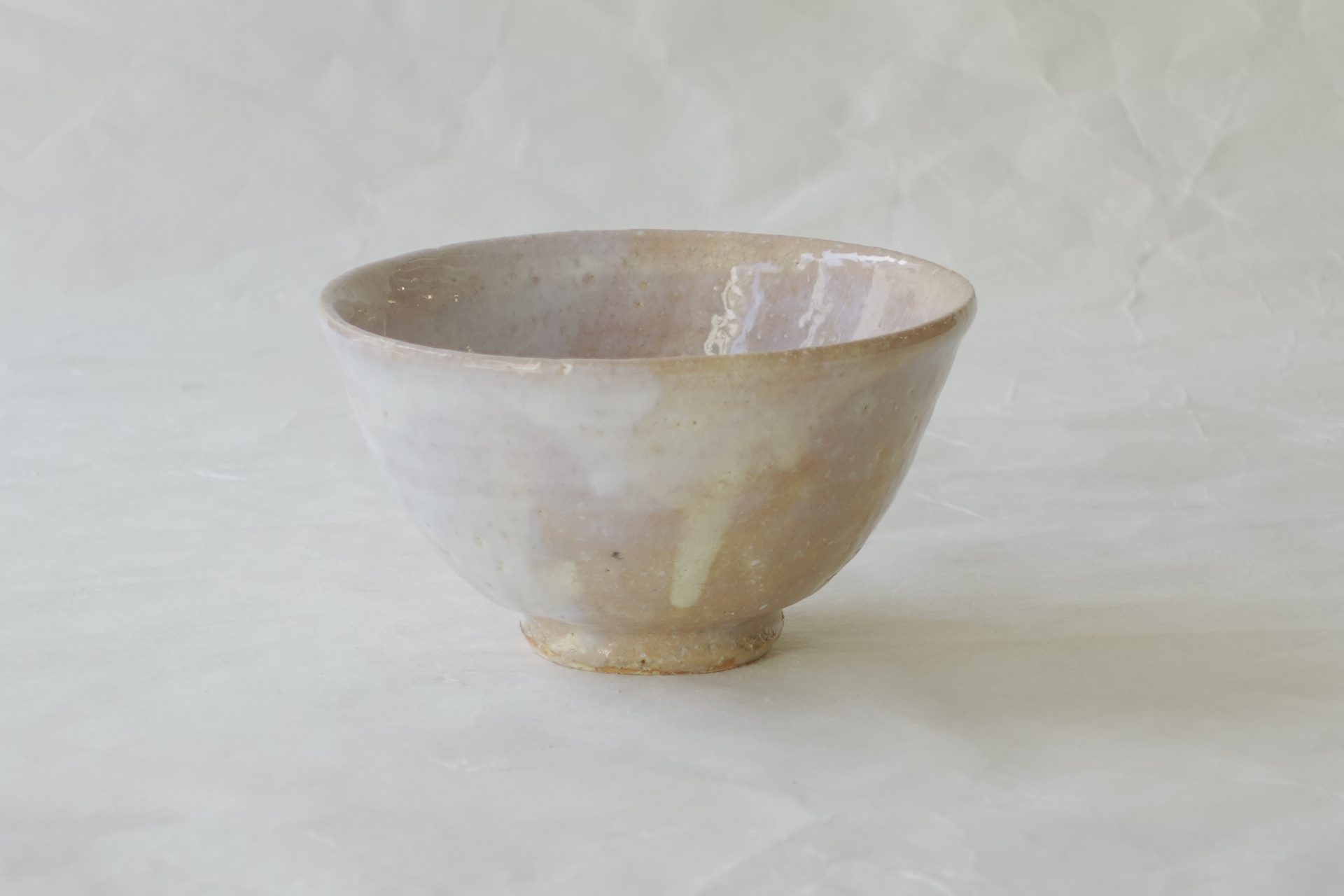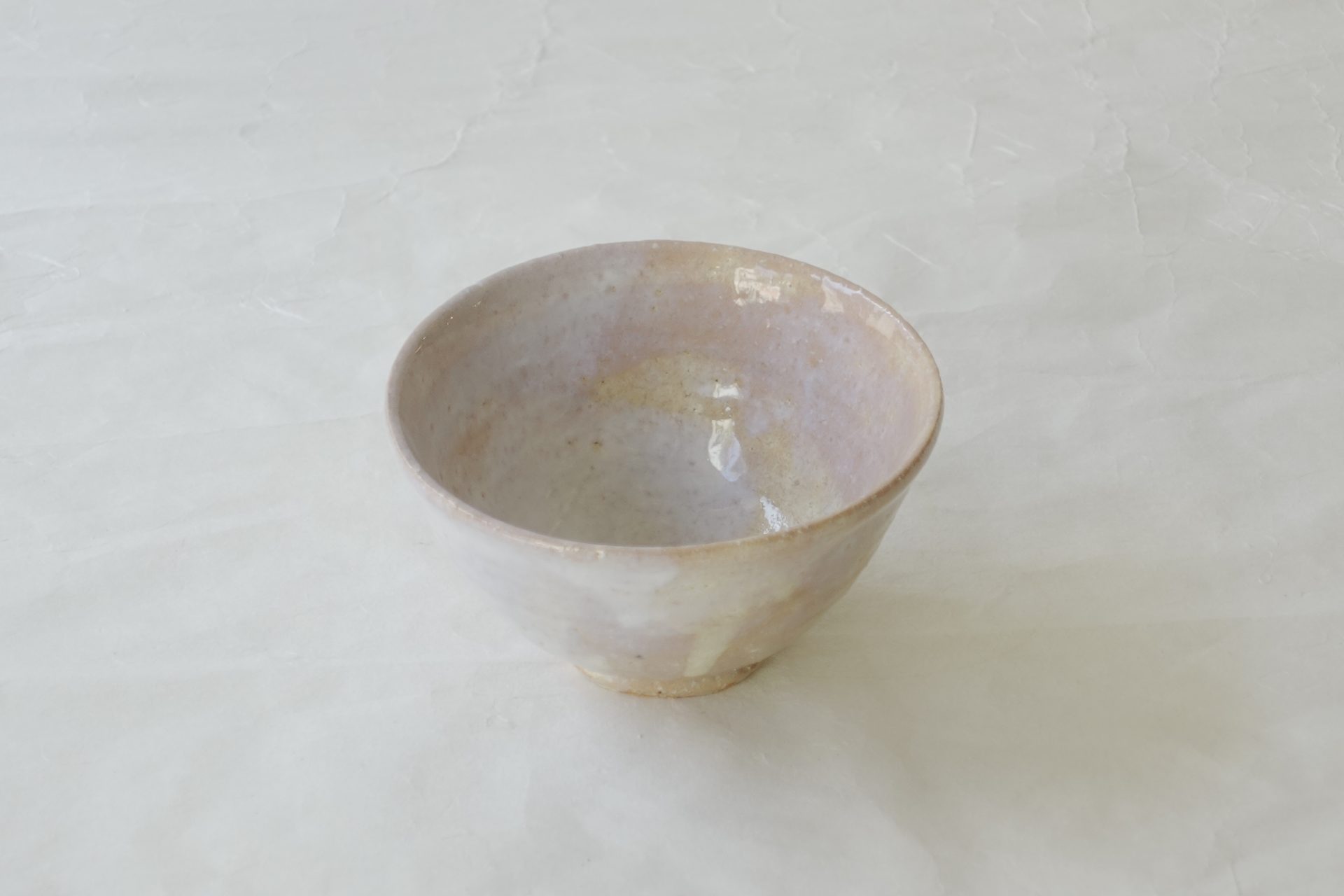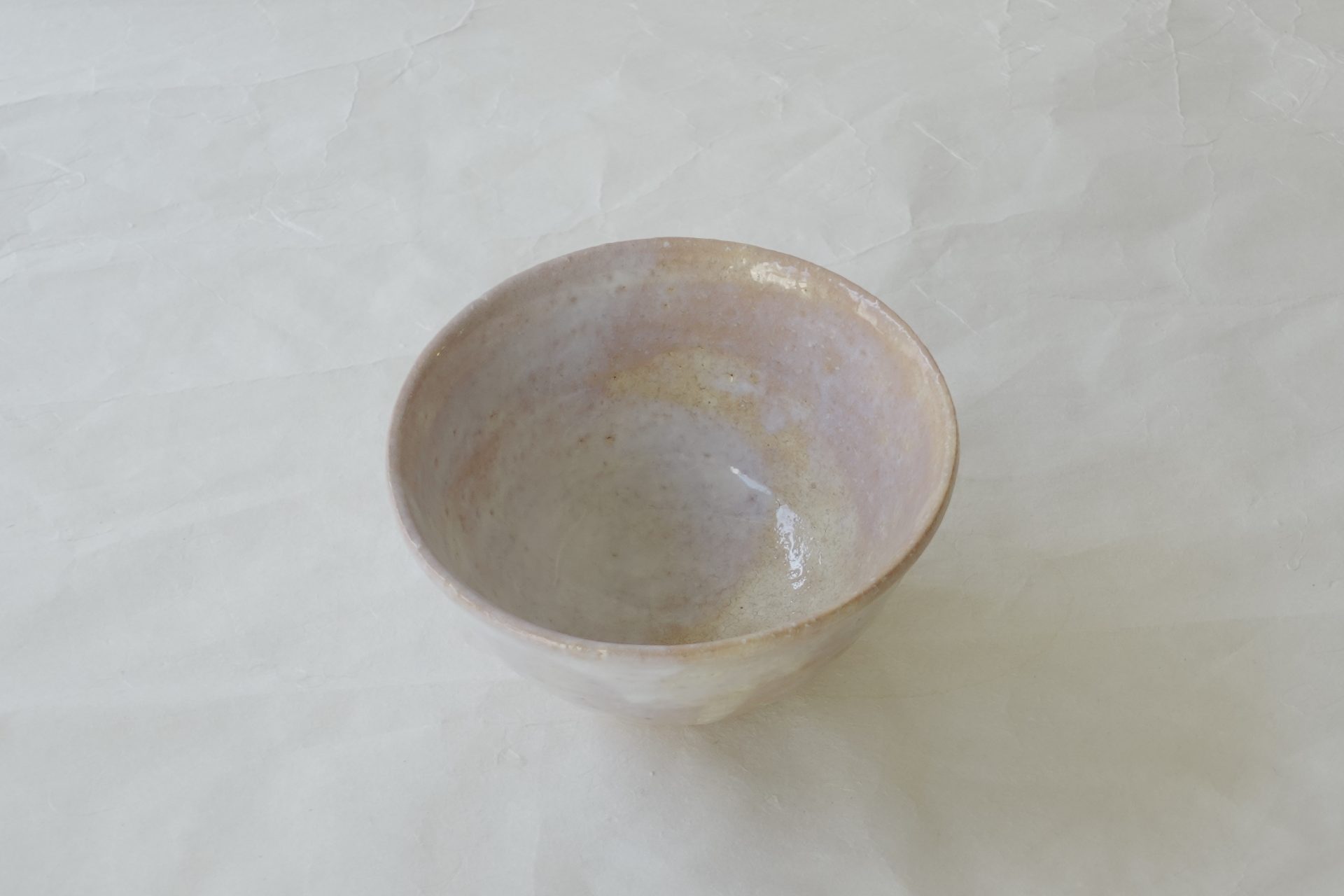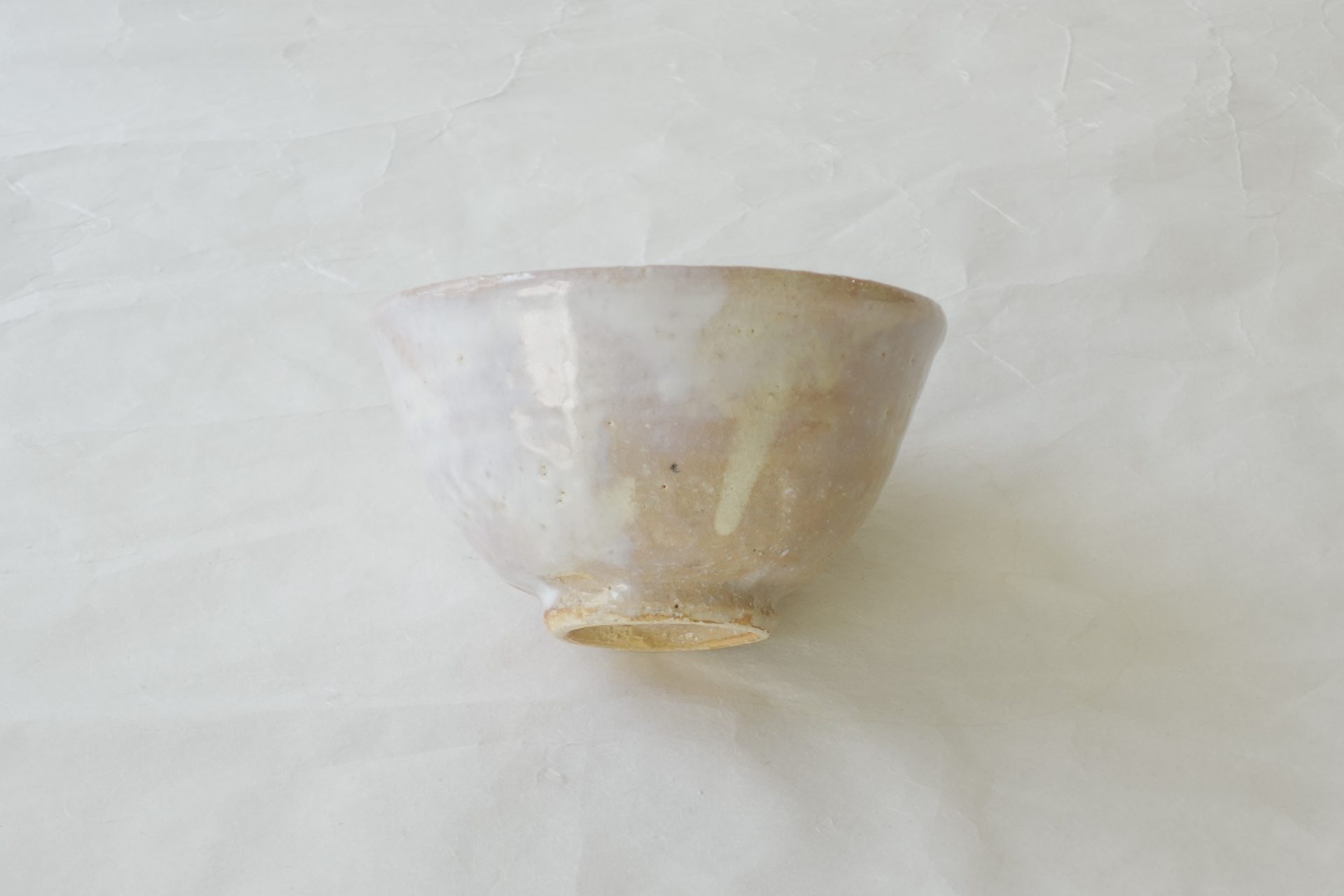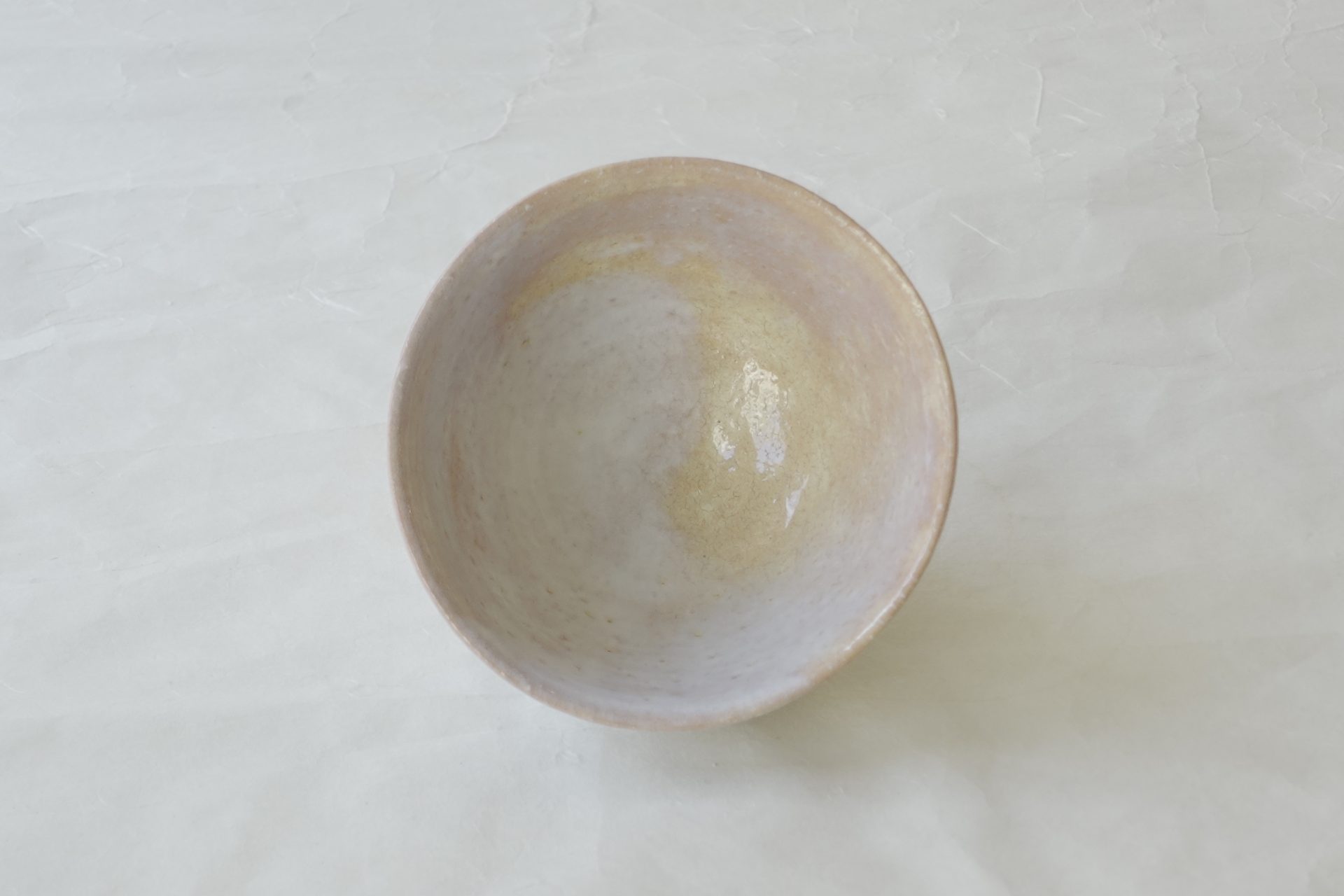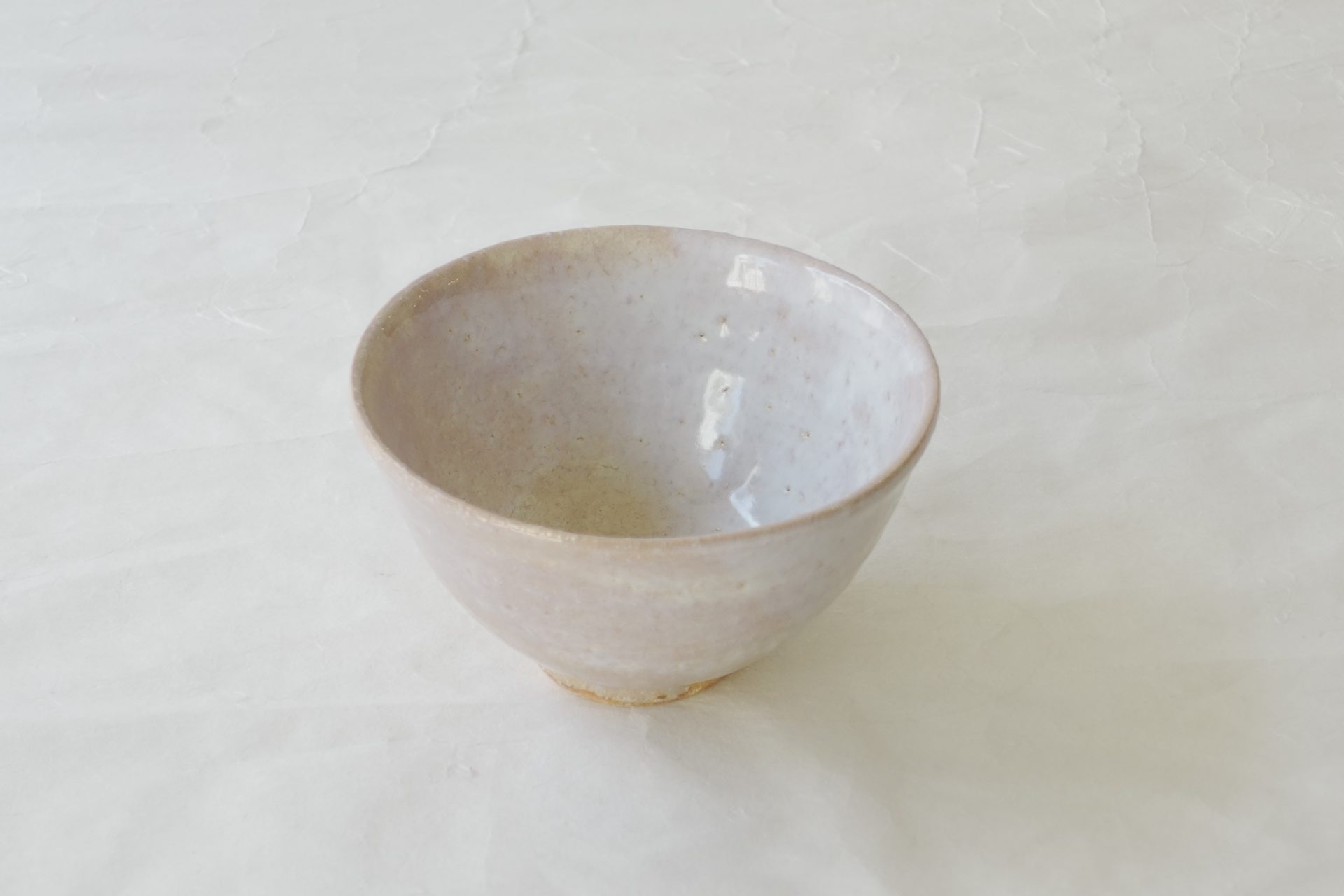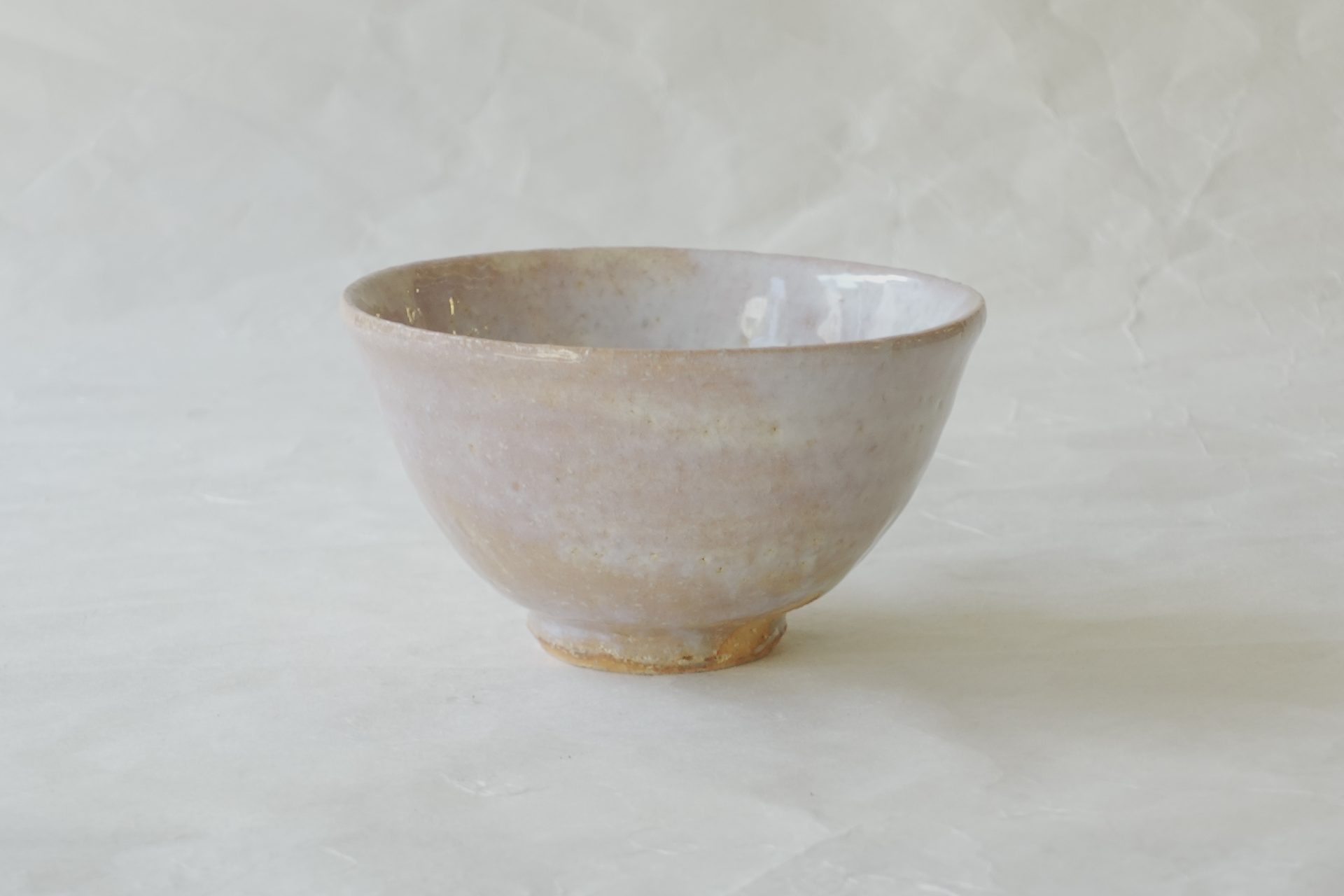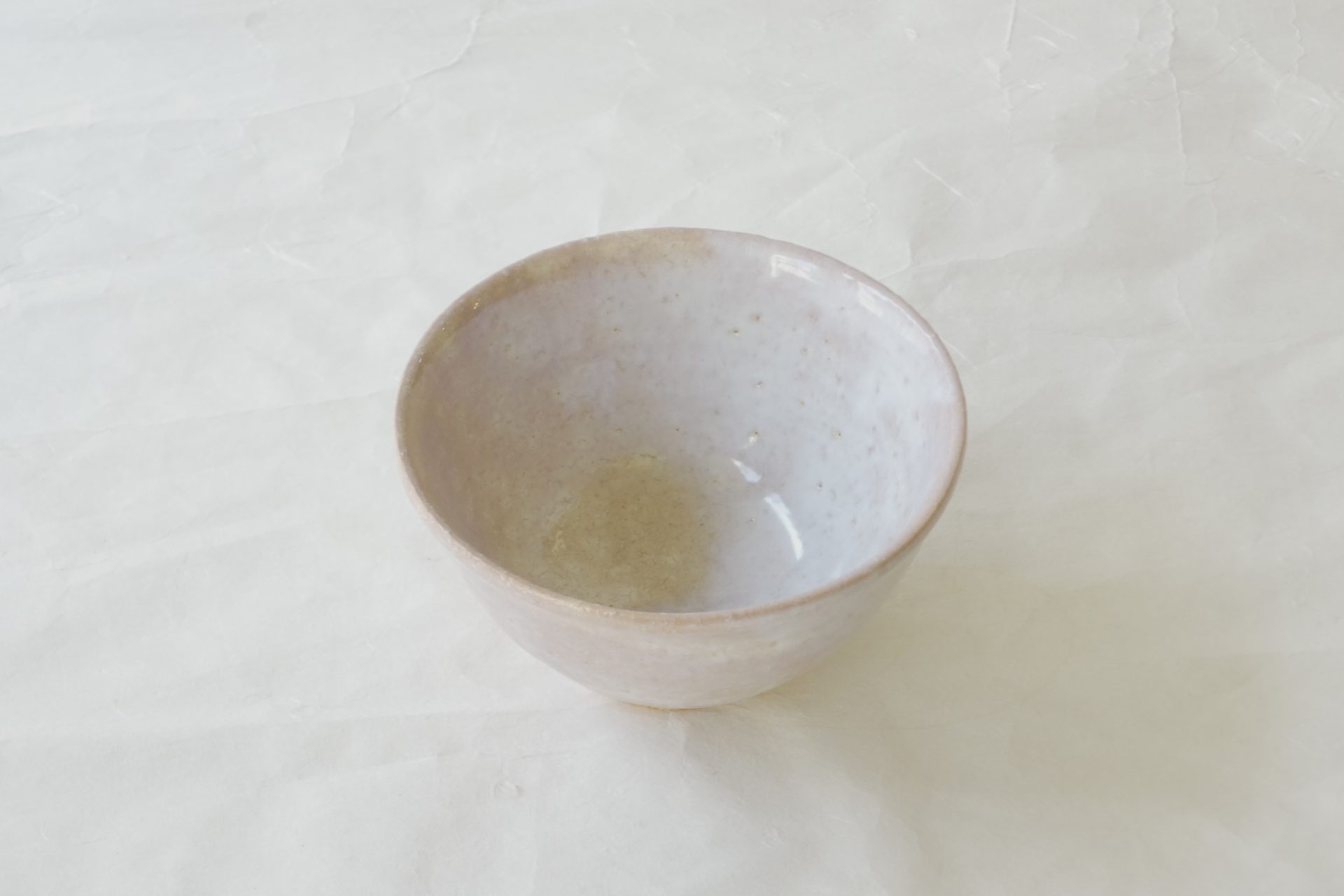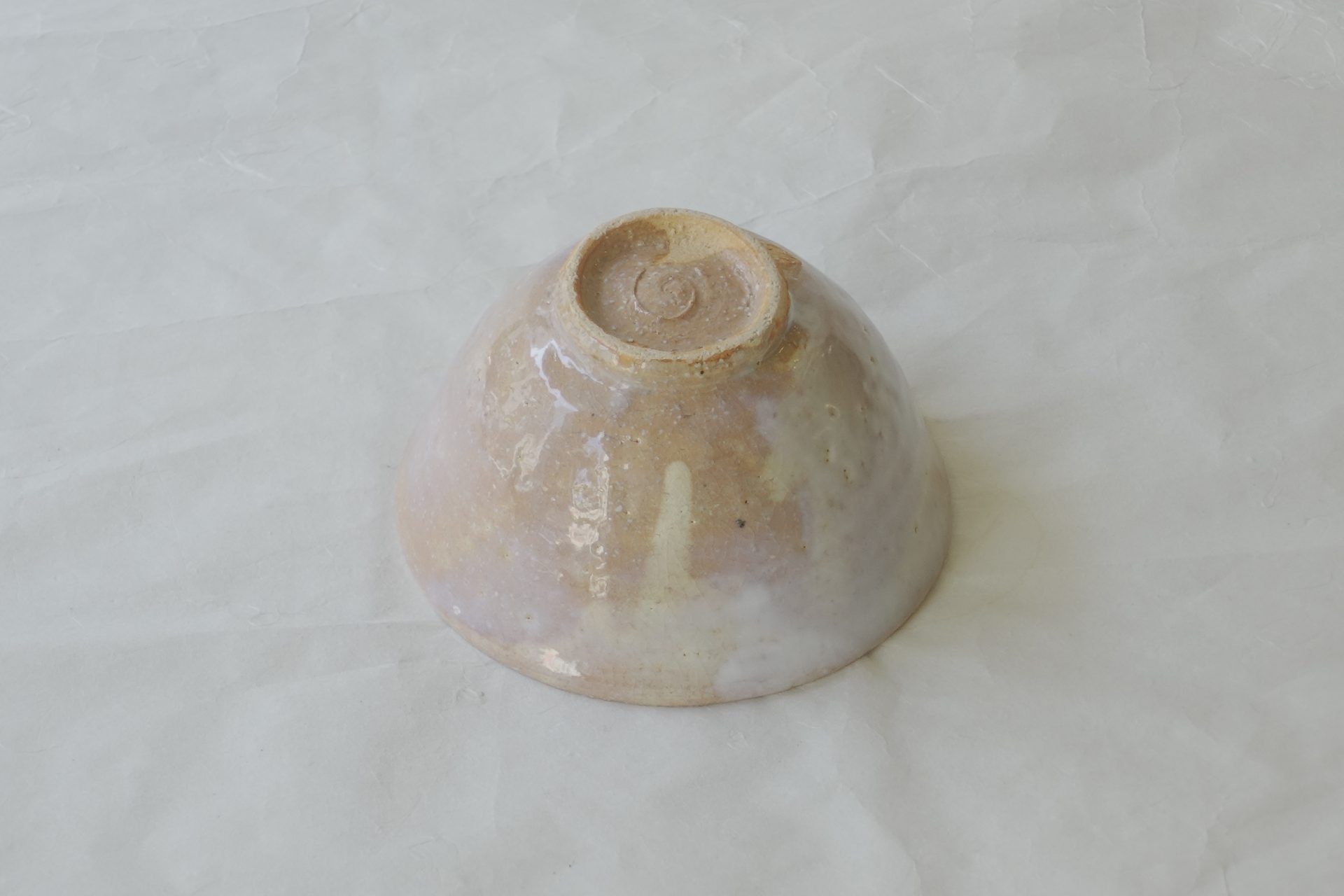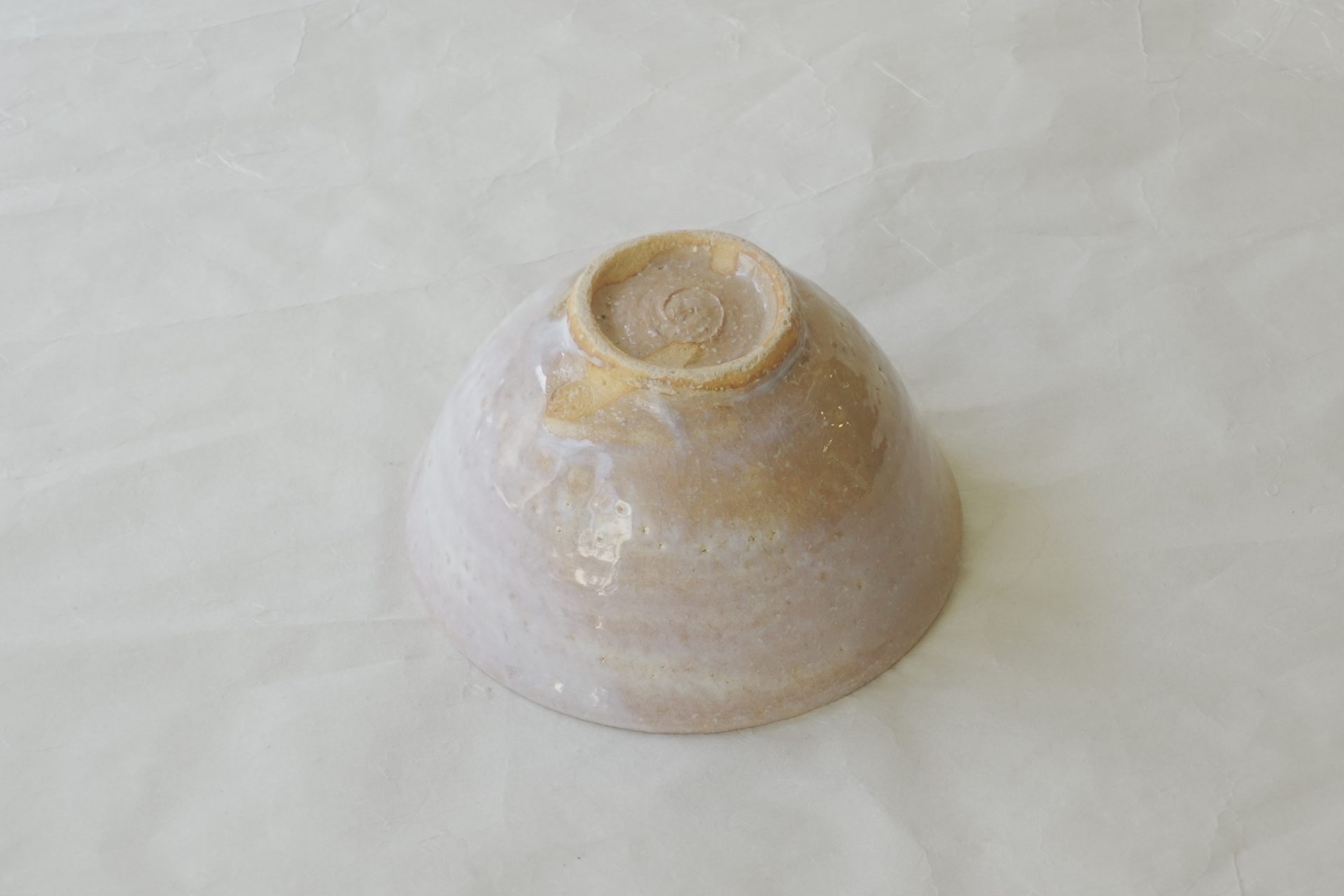径 13cm 高さ 7cm
Hagi Ware – Small Ido Matcha Bowl by Hayashi Koyo – Kiln-Variation Finish
This is a small Ido-style matcha bowl, handcrafted by Hayashi Koyo in the Hagi ware tradition.
The term Ido chawan originally refers to a type of Korean tea bowl believed to have been made during the relatively early period of the Joseon dynasty. Among the Korean tea bowls that were frequently brought to Japan after the Muromachi period, it holds the highest rank and is regarded as “the king of imported tea bowls.”
The clay used is coarse and rich in iron, giving it a faint reddish tone. Because the coarse clay is thrown quickly on the potter’s wheel, the wheel marks remain visible. The glaze is applied using the zubu-gake method, in which the entire bowl—inside and out, even the inside of the foot—is fully dipped in glaze, leaving almost no exposed clay on the foot.
The foot of the bowl takes the form known as takenofushi-kodai (“bamboo-joint foot”), a feature believed to have developed for practical reasons—making it easier to hold the bowl during glazing. This shape is achieved by trimming both the inside and outside of the foot so that the cutting tool grazes the exterior, creating a form reminiscent of a bamboo node. It is one of the established characteristics of Ido bowls.
In this style, the foot is carved with a trimming tool, and when the inside is pared away with a spatula at a diagonal angle, the center rises in a spiral-like formation.
Compared to O-ido bowls, this piece is smaller with a lower foot, a style known as Ko-ido, typically used for serving usucha (thin tea). The reddish clay body is covered with a white glaze, which has undergone yohen (kiln changes) during firing, creating complex variations in the glaze surface.
Its size is perfect for comfortably fitting into smaller hands, making it easy to handle. With continued use, you can also enjoy the celebrated “Seven Transformations of Hagi,” as the appearance of the bowl subtly changes over time.
Diameter: 13 cm
Height: 7 cm
萩烧 林红阳 作 小井户 抹茶碗 窑变
这是一只由林红阳先生制作的萩烧小井户抹茶碗。
“井户茶碗”原本是朝鲜茶碗的一种,被认为产自李朝较早时期,
在室町时代以后大量传入日本的朝鲜茶碗中,
被列为第一等地位,被誉为“唐物茶碗之王”。
胎土为含铁量较高的粗粒土,带有些许红色调。
由于用较快的拉坯速度成形,因此可见明显的拉坯纹。
釉挂方式为“总施釉”,不仅碗内外均施釉,
连高台内侧也完全浸釉,几乎看不到裸露的胎土。
高台形制为“竹节高台”,
据说是为了在施釉时方便拿取茶碗而形成的。
所谓“竹节高台”,是指抹茶碗的高台形似竹节,
在削制高台外侧的过程中,刀具会碰到相应位置,
从而形成竹节状的造型,这也是井户茶碗的特征之一。
高台为削制而成,内侧削挖时刮刀呈斜向进入,
使高台内中央略微隆起,呈现如漩涡般的形态。
此抹茶碗较“大井户茶碗”体量小,且高台较低,
因而被称为“小井户”,主要用于泡薄茶。
胎土带有红色调,覆以白釉,
在烧成过程中产生了窑变,
釉面呈现出复杂多变的色彩与质感。
尺寸适中,小手也能轻松握持,
是一款使用方便、大小恰到好处的抹茶碗。
随着使用时间的增加,还可欣赏到
“萩之七变化”的趣味。
直径:13厘米 高度:7厘米
